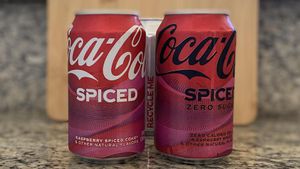Imagine a world where we draw energy from an almost inexhaustible source - the sun, and convert it into fuel. This is not a sci-fi vision anymore but a step closer to reality, thanks to a revolutionary avenue in catalyst technology. Our story unravels from an academic study published in Nature Communications, which dives into the incredible potential of self-healing oxygen evolution catalysts (OECs). These catalysts hold the promise of not just transforming water into hydrogen fuel sustainably, but also enduring the wear and tear of the process, thus redefining our approach to clean energy.
The crux of this study is the concept of self-healing in OECs, particularly those developed from earth-abundant metals like Mn (manganese), Co (cobalt), and Ni (nickel). Traditional OECs, though efficient in facilitating the oxygen evolution reaction (OER) — a crucial part of water splitting — often suffer from stability issues. The novel twist here is to engineer OECs that can regenerate themselves during the reaction, ensuring longevity and efficiency.
But before we dive into the nitty-gritty of how these catalysts work, let's set the context. Water splitting is an elegant chemical process where water molecules (H2O) are divided into oxygen (O2) and hydrogen (H2) gases. This process is split into two half-reactions: the hydrogen evolution reaction (HER) and the oxygen evolution reaction (OER). While HER is relatively straightforward, OER poses a significant challenge due to the multiple steps and high energy barriers involved in producing oxygen gas from water molecules.
Traditionally, the catalysts used for OER are ruthenium (Ru) and iridium (Ir) oxides, which are not only expensive but also scarce. These metals, despite their efficiency, degrade over time, making them less viable for large-scale applications. This limitation paved the way for exploring alternatives from more abundant materials.Visionaries like Daniel G. Nocera and his team are spearheading the move towards cheaper and more sustainable options. They advocate for catalysts based on first-row transition metals, such as manganese, cobalt, and nickel, which are not only abundant but also offer promising catalytic properties
The essence of the self-healing mechanism in these OECs can be likened to human skin healing after a cut. When the catalyst surface undergoes damage during the OER process, the self-healing mechanism kicks in to repair and regenerate the active sites. This ensures continuous and efficient performance of the catalyst. For example, in cobalt-phosphate (CoPi) catalysts, the self-assembly occurs by electrodeposition, where a cobalt film forms on an electrode in a phosphate-containing electrolyte. Whenever Co2+ ions are lost from the electrode (due to the OER), they are instantly replaced by new Co2+ ions from the solution, maintaining the film’s integrity and performance
The concept of self-repair in catalysts isn't entirely new. However, what sets this study apart is the idea of continuous self-regeneration during the catalytic process, analogous to a wound healing itself automatically as the body carries on with its normal functions. In previous systems, an external intervention or a period of downtime was necessary for the repair process. However, these newly developed self-healing OECs operate under dynamic equilibrium, constantly balancing the damage and repair without the need for external stimuli.
Let's delve into the practicalities of how these self-healing OECs are designed and tested. The researchers experimented with catalysts like Mn-OECs by electrodepositing manganese on an electrode from a dilute Mn2+ solution in a weakly basic medium. They then monitored the stability and efficiency of the OER over different pH levels. By analyzing the reaction kinetics and catalyst deposition rates using techniques like Tafel analysis, they could pinpoint two mechanisms governing the OER at varying pH levels. This careful balance allows the Mn-OECs to operate stably even in acidic environments by ensuring that the rate of catalyst deposition outpaces the rate of catalyst dissolution, thereby maintaining continuous activity.
Moreover, the study demonstrated that these self-healing properties are not limited to a single type of metal. For instance, NiFe-OECs and CoFe-OECs, which combine nickel or cobalt with iron, showed remarkable self-repair abilities. This mixed-metal approach not only improves the OER efficiency but also extends the operational lifespan of the catalysts. Such innovative configurations were tested by dynamic cycling of dissolution, diffusion, and deposition of the metal ions during electrolysis, proving that the catalysts could maintain high performance over prolonged periods.
However, this pioneering approach comes with its unique set of challenges. One significant limitation is the careful balance required between the metal ion concentrations in the electrolyte to sustain the self-healing process. Inadequate concentrations can lead to the cessation of self-repair, thereby reducing the catalyst’s efficiency over time. Another challenge lies in scaling up the process for industrial applications, where maintaining the precise conditions necessary for self-healing can be technically demanding.
Despite these challenges, the implications of this research are profound. The ability to develop durable and efficient OECs from earth-abundant elements could revolutionize the field of renewable energy. By reducing reliance on scarce and expensive metals, we can make water-splitting technologies more accessible and scalable. This, in turn, could significantly impact hydrogen production, fuel cells, and other applications requiring sustainable and clean energy sources
Furthermore, the potential applications of self-healing OECs extend beyond water splitting. Catalysis is a cornerstone of numerous industrial processes, from chemical manufacturing to environmental management. The principles uncovered in this study might herald new types of catalysts for various reactions, paving the way for more resilient and sustainable industrial processes.
But how exactly do these catalysts heal themselves? The key lies in the dynamic equilibrium maintained during the OER. For Co-OECs, the self-healing process is steered by a delicate interplay between the catalytic and structural components of the catalyst. The cobalt ions in the electrolyte redeposit onto the electrode surface as soon as they are leached, driven by the oxidation state changes occurring during the reaction. This equilibrium ensures that the catalyst doesn't lose its active species over time, maintaining a steady catalytic performance. Similar mechanisms were observed in NiBi and MnO2 systems, where nickel and manganese ions, respectively, promote continuous regeneration of the catalyst surface, thereby preserving its activity and integrity.
The researchers also propose expanding this self-healing approach to new generations of mixed-metal oxide catalysts. By using metals like Fe, Cu, and Ti in combination with Mn, Co, or Ni, they aim to enhance both the activity and stability of the catalysts. This strategy leverages the synergistic effects of different metals to improve the overall performance and durability of the OECs.Image a cross-country vehicle (like a sturdy, renewable energy-powered car) transitioning seamlessly from the varied terrains – it would be much more durable and efficient than a vehicle built only for smooth roads. Similarly, mixed-metal oxides can cater to a broader range of operating conditions while retaining their self-healing properties
For instance, the inclusion of Fe in NiFe-OECs helps in preserving the integrity of the catalyst under strongly alkaline conditions, while CoFe-OECs benefit from iron's ability to prevent thick overlayer formations, which can otherwise hinder the OER efficiency. Such nuances illustrate the complexity and the promise of self-healing catalysts, as they offer a finely-tuned balance between different metals to maximize both performance and stability.
This study also sparks intriguing possibilities for future research. One promising direction is the exploration of other first-row transition metals and their combinations. There is potential in alloys of metals like copper and titanium, which can bring in unique properties beneficial for both OER and other catalytic processes. Additionally, the focus on low-cost and readily available materials aligns with the broader goal of sustainability in catalysis research.
The technology’s scalability is another exciting avenue. Translating these laboratory successes into industrial-scale operations remains a significant challenge but also an area ripe for innovation. Integrating self-healing OECs into existing renewable energy infrastructures, such as solar and wind power systems, could amplify their efficiency and durability, making renewable energy more reliable and widespread. Imagine solar farms equipped with robust OECs, tirelessly working to convert water into hydrogen fuel without significant maintenance interruptions.
This dynamic equilibrium of repair and regeneration found in self-healing OECs can lead to unprecedented advancements in the field of catalysis. These findings might even set a new benchmark in the development of other catalytic systems, encouraging the incorporation of self-healing properties as a standard in catalyst design. As the researchers aptly conclude, embracing such innovative paradigms could be a vital step towards a more sustainable and resilient energy future.
In a nutshell, the journey of developing self-healing oxygen evolution catalysts stands as a beacon of ingenuity in our quest for sustainable energy solutions. By harnessing the regenerative capabilities of these catalysts, we are not merely advancing scientific boundaries but also paving the way for cleaner, more efficient, and accessible energy systems. The implications of this research echo far beyond the laboratory, hinting at a transformative impact on how we harness and utilize the power of renewable resources.



